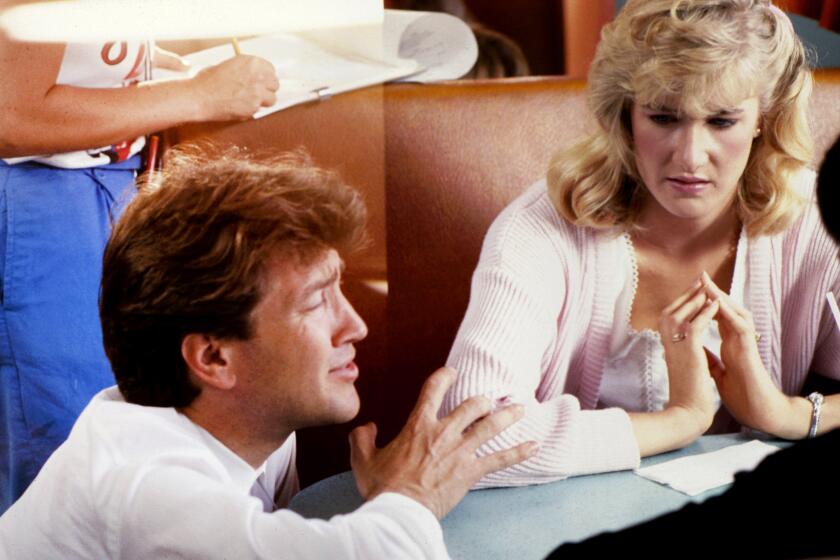Earth Stars in Movie Shot From Space
- Share via
Earth’s awesome beauty--and environmental threats to its survival--are vividly displayed in “Blue Planet,” a $5-million giant-screen movie filmed by astronauts aboard seven space shuttle flights.
The 42-minute film is opening this month at IMAX and OMNIMAX theaters in 14 U.S. and Canadian cities.
“We hope the audience will come out of the film feeling concerned about protecting the Earth. It’s our only home,” said Graeme Ferguson, producer of “Blue Planet” and co-founder of IMAX Systems Corp. of Toronto.
The movie gives viewers “a real good feel for the perspective shuttle crew members have from low-Earth orbit,” said NASA astronaut James Buchli, a 45-year-old Marine Corps colonel who helped shoot the film during Discovery’s March, 1989, mission.
“It’s hard not to appreciate the grandeur of our Earth from that perch,” Buchli said by phone from Johnson Space Center in Texas. “You have a powerful feeling of how insignificant each of us is with respect to the world as a whole.”
The camera used to make “Blue Planet” was invented in 1967. IMAX film has a frame size 10 times larger than conventional 35-millimeter movie film, providing intense detail and a wide-field view projected onto a giant screen.
“Blue Planet” depicts the natural and human forces that shape Earth’s environment, using IMAX and still photography from space and a variety of film shot on the planet’s surface and even beneath the sea.
From space, the movie shows peaceful, almost alien scenes of volcanoes, eerie lightning flashes, puffy thunderclouds and giant swirling hurricanes. Then the film moves to the ground, capturing the violence of those natural processes with help from a powerful sound system.
The movie was directed by four-time Oscar-winning sound designer Ben Burtt, who did sound effects for the “Stars Wars” trilogy and “Indiana Jones” films.
The main message of “Blue Planet” deals with human damage to the environment: topsoil from farms washing down the Mississippi and Yangtze rivers, denudation of Madagascar, vast stretches of city lights gobbling energy supplies, and a pall of smoke obscuring the Amazon Basin as rain forest goes up in flames.
“It will wake people up,” said Therese Andrade, director of the IMAX Theater in Los Angeles, where the movie opens Friday at the California Museum of Science and Industry on a five-story-tall, 70-foot-wide screen. “People will walk away thinking we really need to do something to preserve our fragile planet.”
More to Read
Only good movies
Get the Indie Focus newsletter, Mark Olsen's weekly guide to the world of cinema.
You may occasionally receive promotional content from the Los Angeles Times.








